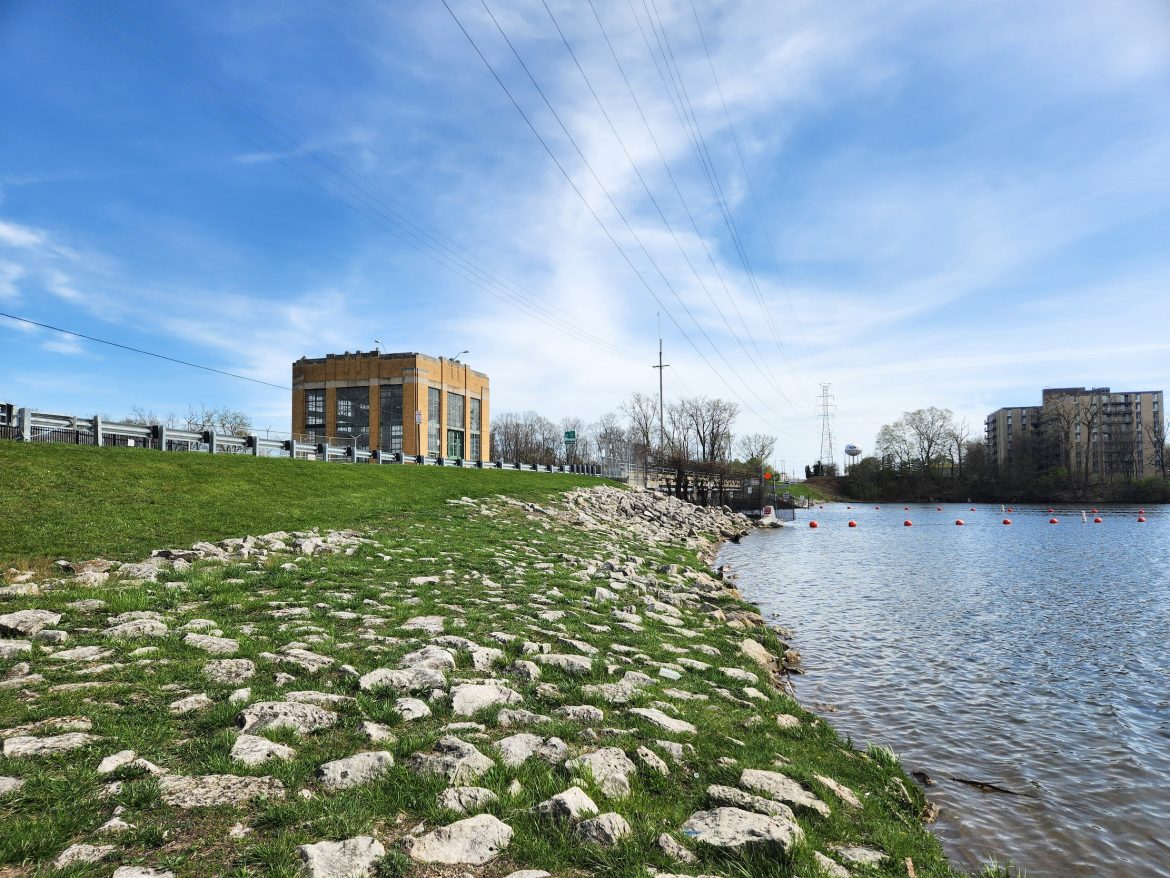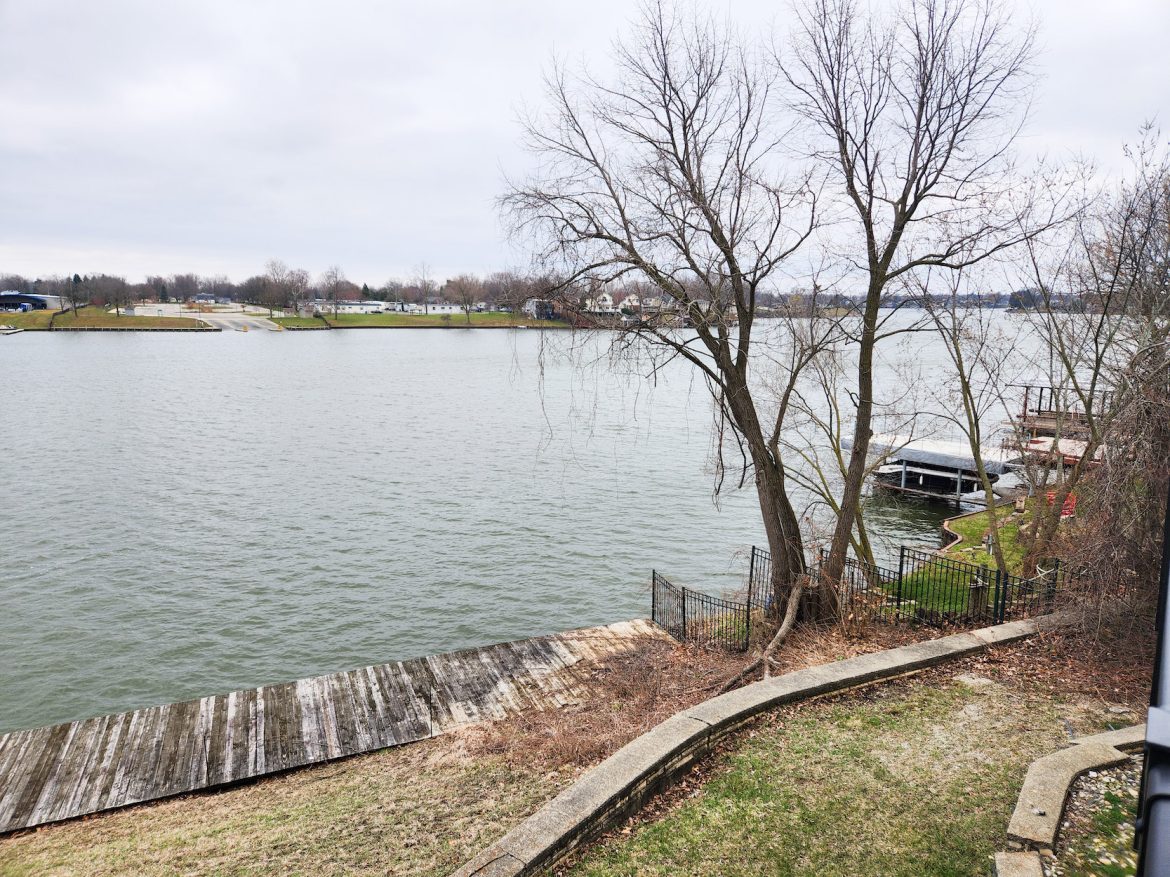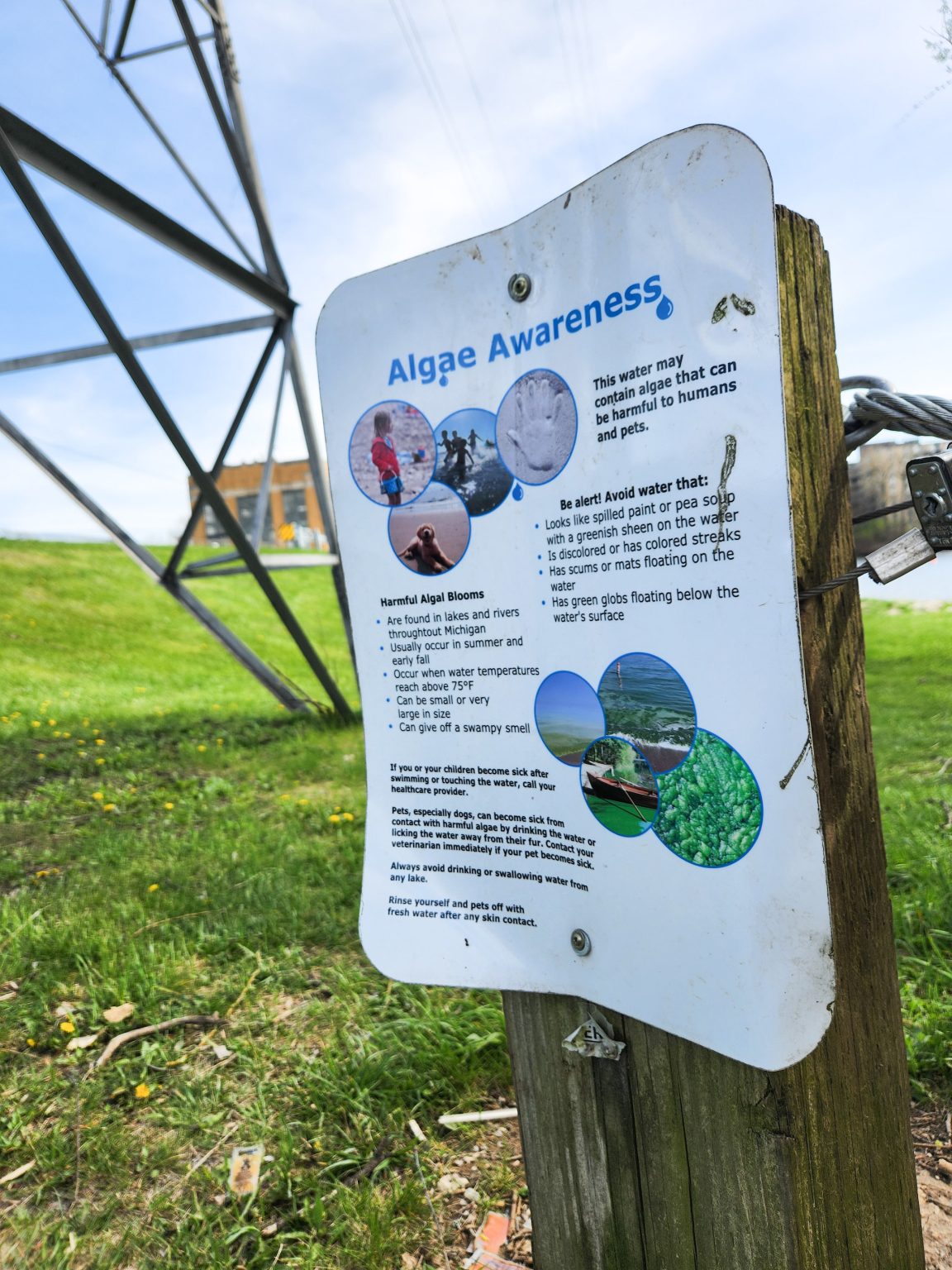
This article was republished here with permission from Great Lakes Echo.
By Elinor Epperson and Daniel Schoenherr, Great Lakes Echo
Like clockwork, Michigan’s Ford Lake and its downstream neighbor, Belleville Lake, turn bright green every summer due to harmful algal blooms.
The lakes, located near Ypsilanti in the southeast part of the state, have struggled for decades with phosphorus pollution that spurs algae growth. The quest for a solution is familiar to urban lake communities across the Great Lakes region.
But a hydroelectric dam that separates the two lakes can be used to stop the algal blooms in their tracks, one expert says.
“Maybe it’s not pristine, but it’s certainly a heck of a lot better than it used to be,” said John Lehman, a professor of ecology and limnology at the University of Michigan. He found that the Ford Lake Dam can mix the eutrophic water to prevent the oxygen depletion that causes algal blooms.
Preventing blooms before they start
The Environmental Protection Agency says that neither lake is suitable for swimming and fish from both are unsafe to eat. Excessive phosphorus in both lakes keeps oxygen levels lower than needed to support the ecosystem.
Lehman recommended that the township periodically open the floodgates at the bottom of the dam. With enough water flowing through those gates, the water in the lake will mix and provide a steady dose of oxygen to the lake’s sediment, he said.
Lehman and Ypsilanti Township tried the method in 2008.
“We wound up being able to improve the condition of the lake really measurably,” he said. But both lakes continue to bloom each year due to persistent high levels of phosphorus.
For decades, state and local agencies studying the lakes have argued that high phosphorus loads come from external sources, such as Ann Arbor’s wastewater treatment plant upstream, and surrounding lawns fertilized with phosphorus.
Lehman disagrees. He says it is already trapped in the sediments.
“There’s times when the lake exports more phosphorus than it takes in,” he said.
The usual suspects
Lehman has studied Ford Lake’s phosphorus levels for decades. He found that they dropped after local and state regulations restricted phosphorus in lawn fertilizer.
These regulations grew out of rising awareness of the harm from excess phosphorus. Stormwater collects the phosphorus-rich fertilizer used on residential and commercial lawns, taking it to the nearest water body. The extra phosphorus can lead to harmful algal blooms in the summer months.
Belleville Lake benefits from changes to Ford Lake, as a good portion of its phosphorus comes from the other lake directly upstream, Lehman said.
Jim O’Neill, who lives on Belleville Lake, said he suspects other residents still use fertilizer with phosphorus. The township has posted reminders about fertilizer bans, but these regulations are difficult to enforce.

Jim and Melinda O’Neill’s property overlooks the east end of Belleville Lake. The O’Neills do not boat or fishing on the lake, but enjoy the view. Image: Elinor Epperson
“Sometimes you’ll see stuff going into the lake that shouldn’t be in there,” O’Neill said. But Lehman maintains that the amount of phosphorus entering the lakes is not the main culprit for nuisance algal blooms.
What about wastewater?
The other external source of excess phosphorus is Ann Arbor’s wastewater treatment plant. The state dictates the maximum amount of a contaminant that can enter a water body without decreasing its water quality.
Michigan’s Department of Environment, Great Lakes and Energy reports that the plant’s phosphorus output has consistently fallen below those limits.
Lehman doubts sewage overflows are a major factor in Ford Lake’s phosphorus. The largest spill in recent history at Ann Arbor’s plant – a 13 million gallon release of partially treated sewage during the August 2003 blackout – did not induce an algal bloom.
“That was like 10 times the amount of phosphorus that came down [the river]…in three days,” he said. That’s “more than you would ordinarily get in the whole month.”
A yearly nuisance
Despite these findings, phosphorus in Ford and Belleville lakes exceed the state’s limits every year.
Lehman found that most of the phosphorus causing harmful algal blooms is released from sediment already present in the lake, not external sources.
“It doesn’t matter how much is coming down the river,” he said. “It’s just what happens in the internal dynamics.”
Midwest soil is already rich in phosphorus, which releases from lake sediment when there is insufficient oxygen in the water, he said. The excess phosphorus feeds the growth of toxic cyanobacteria, which bloom to create a thin green layer on top of the water.
These algal blooms are a routine part of summer for residents on both lakes, said O’Neill’s wife, Melinda O’Neill.
“We get to see a lot of the green [blooms]…it looks like [an] oil slick on top,” she said.
Between 2022 and 2023, residents reported 23 different green algae slicks on Ford and Belleville lakes to the Michigan Department of Health and Human Services. Testing found toxic byproducts of the bloom at only four locations. Blue-green algae was verified at all locations except for one.

A sign posted at the Ford Lake Dam warns residents of the dangers of toxic algal blooms. Image: Elinor Epperson
But the O’Neills haven’t noticed much contamination in their nine years living on Belleville Lake. Melinda said other residents complain about the lake’s water quality on Facebook, but the O’Neills only notice an occasional “fishy” smell during the summer. Otherwise, the family enjoys the view of the water and lakeside living.
“It’s like decompressing after a hard day’s work,” Jim O’Neill said.
Changes on the horizon?
Ypsilanti Township has continued to use Lehman’s recommended method to mix Ford Lake’s water. But it comes at a cost.
Ford Lake Dam generates electricity that the township sells to Detroit Edison, the area’s power company. Opening the floodgates diminishes how much electricity the dam generates, resulting in a revenue loss of $10,000 to $30,000 per year for the township.
Ann Arbor and Ypsilanti Township recently struck an agreement to update how they manage phosphorus from wastewater in the river, including Ford and Belleville lakes. Officials representing both municipalities confirmed that the agreement is not yet finalized but is moving forward.
Robert Kellar, a spokesperson for Ann Arbor’s public services administration, said the city hopes to address the “difference of opinion” about the source of excess phosphorus.
Lehman has documented the continued debate in his research papers over the years. Disagreements about the lakes’ management “suggests that acceptable recreational water quality can come at a quantifiable price,” Lehman wrote in 2014. Residents and local governments have to decide what price they want to put on better water quality in their lakes.
Catch more news at Great Lakes Now:
Can Michigan reduce phosphorus pollution getting into Lake Erie by 40 percent?
Building a Smart Lake Erie Watershed
Featured image: The Ford Lake Dam was built in the 1930s to produce hydroelectricity for a nearby Ford plant. Ypsilanti Township now sells the electricity it generates to Detroit-Edison. Image: Elinor Epperson




